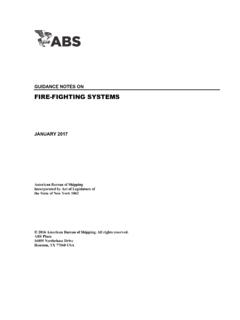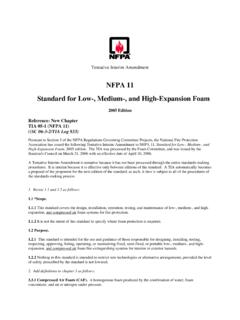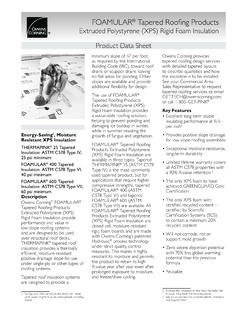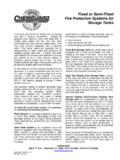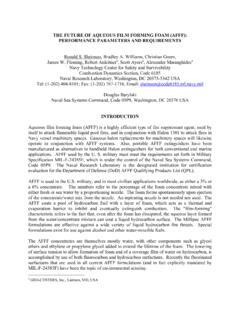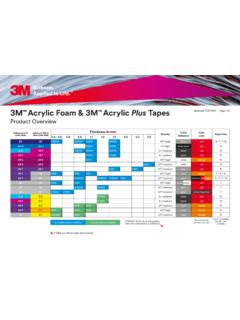Transcription of FIRE-FIGHTING SYSTEMS
1 Guidance Notes on FIRE-FIGHTING SYSTEMS GUIDANCE NOTES ON. FIRE-FIGHTING SYSTEMS . MAY 2005 (Updated February 2015 see next page). American Bureau of Shipping Incorporated by Act of Legislature of the State of New York 1862. Copyright 2005. American Bureau of Shipping ABS Plaza 16855 Northchase Drive Houston, TX 77060 USA. Updates February 2015 consolidation includes: February 2014 version plus Corrigenda/Editorials February 2014 consolidation includes: June 2005 version plus Corrigenda/Editorials June 2005 consolidation includes: May 2005 version plus Corrigenda/Editorials Foreword Foreword Purpose The ABS Rules incorporate many requirements intended to prevent the onset of a fire . However, even with all the preventative measures taken, shipboard fires still occur. Therefore, the proper design, installation and operation of the vessel's FIRE-FIGHTING SYSTEMS are critical to the safety of a vessel and the personnel onboard. Since FIRE-FIGHTING SYSTEMS are so critical, the designs and arrangements of such SYSTEMS should be carefully evaluated for compliance with the ABS requirements by the designer and ABS Engineering staffs.
2 These Guidance Notes have been developed to assist in a better understanding of the ABS requirements for such SYSTEMS . They are intended to provide a general overview of ABS requirements that should be considered during technical plan review activities. These Guidance Notes also examine the basic scientific fundamentals of fire , as appropriate for a proper understanding and application of the ABS requirements. Accordingly, this document should be considered as general guidance only and the technical reviews of FIRE-FIGHTING SYSTEMS should verify compliance with all ABS Rules applicable to the specific vessel involved. Note: Rule references in these Guidance Notes ( 4-7-2 , etc.) are typically to the requirements found in the ABS. Rules for Building and Classing Steel Vessels, unless noted otherwise. Scope The scope of this document is limited to the review of ABS requirements considered during the technical plan review of active FIRE-FIGHTING SYSTEMS onboard ABS-classed vessels. Passive fire protection arrangements, such as structural fire protection, as well as fire detection SYSTEMS , are outside the scope of this document.
3 FIRE-FIGHTING SYSTEMS of offshore facilities and installations are also outside the scope of this document. The review of FIRE-FIGHTING SYSTEMS for the International Maritime Organization's (IMO's) International Convention for the Safety of Life at Sea (SOLAS) requirements is also not within the scope of this document. However, in many cases, the ABS Rules for FIRE-FIGHTING SYSTEMS either incorporate or directly reference IMO SOLAS FIRE-FIGHTING system requirements. Accordingly, within the discussions of the ABS requirements for various FIRE-FIGHTING SYSTEMS , related interpretations of the associated SOLAS requirements, as developed by the International Association of Classification Societies (IACS), are identified. These IACS interpretations are called Unified Interpretations (UI). As an IACS member, ABS is obligated to apply these UIs as appropriate interpretations of the SOLAS requirements, unless directed otherwise by the Flag Administration. Interpretations provided in the UIs should be considered when conducting technical plan reviews.
4 Note: Development of appropriate Unified Interpretations and revision of existing UIs is an ongoing effort within the IACS Working Parties. Therefore, attention is directed to the latest edition of the IACS UI being available on the website In addition to the IACS UIs, IMO MSC Circular 847, Interpretations of Vague Expressions and other Vague Wording in SOLAS Consolidated Edition 1997 Chapter II-2, also provides guidance regarding SOLAS. FIRE-FIGHTING system requirements. Many of the MSC Circular 847 interpretations are based upon the IACS. UI interpretations, while others provide revised or additional interpretations of the SOLAS requirements. A number of the MSC Circular 847 interpretations have been included in the SOLAS 2000 consolidated edition. Consequently, these requirements were also incorporated into the ABS Rules. However, since the MSC Circular 847 interpretations identify useful information and guidance relative to certain Rule requirements, selected IMO MSC Circular 847 interpretations have also been identified.
5 Note: Regarding classification requirements, MSC Circular 847 interpretations which are not included within SOLAS have not necessarily been officially adopted by ABS and should only be applied as directed by the ABS Technical Consistency Department. Further, MSC Circular 847 interpretations may not be mandatory for any particular Flag Administration, except for those incorporated within SOLAS. Member Governments are only invited to use the annexed interpretations as guidance, and therefore, specific instructions from the ABS Regulatory Affairs Department should be obtained regarding the application of these interpretations on behalf of any particular Administration. ABS GUIDANCE NOTES ON FIRE-FIGHTING SYSTEMS . 2005 iii Table of Contents GUIDANCE NOTES ON. FIRE-FIGHTING SYSTEMS . CONTENTS. SECTION 1 Basics of a fire .. 1. 1 Chemistry of fire .. 1. Oxidation .. 1. State of Products in fire Oxidation Process .. 1. 2 Fundamentals of a fire .. 2. 3 The fire Triangle .. 2. 3. Oxygen .. 4.
6 Heat .. 5. 4 The fire Tetrahedron .. 5. 5 Extinguishment Considering the fire Tetrahedron .. 5. Removing the 6. Removing the Oxygen .. 6. Eliminating the 6. Breaking the Chain Reaction .. 7. 6 Hazardous/Combustible Materials .. 7. Flames .. 7. Heat .. 7. Gases .. 8. Smoke .. 8. FIGURE 1 The fire Triangle .. 2. FIGURE 2 The fire Tetrahedron .. 5. SECTION 2 Classification of Fires .. 9. 1 Overview .. 9. 2 Class A Fires .. 10. Wood and Wood-based 10. Textiles and Fibers .. 11. Plastics and 12. Locations of Class A Materials Onboard .. 13. Extinguishment of Class A 14. 3 Class B Fires .. 14. Flammable 14. Flammable 16. iv ABS GUIDANCE NOTES ON FIRE-FIGHTING SYSTEMS . 2005. 4 Class C Fires .. 18. Types of Equipment .. 18. Electrical Faults that Cause Fires .. 19. Hazards of Electrical 19. Locations of Electrical Equipment 19. Extinguishment of Class C Fires .. 20. 5 Class D Fires .. 20. Hazards/Characteristics of Specific Metals .. 20. Locations of Class D Materials Onboard .. 21. Extinguishment of Class D Fires.
7 21. TABLE 1 fire Classifications .. 9. TABLE 2 Burning Characteristics of Synthetic Fibers .. 12. SECTION 3 fire Main SYSTEMS .. 22. 1 General Principles of the fire Main system .. 22. 2 Extinguishing Capabilities of Water .. 22. 3 Moving Water to the 22. Straight Streams .. 23. Fog Streams .. 26. 4 ABS Requirements for fire Main SYSTEMS .. 28. Main fire Pumps .. 28. Emergency fire Pump .. 31. fire Main Sizing and system Pressures .. 33. fire Hose Reaction .. 35. Isolation Valves and Routing 36. fire Main Piping Components/Materials .. 36. Hydrant Locations and fire 37. International Shore Connection 39. Cold Weather Protection .. 39. Additional Requirements for Vessels with Automation Notations .. 40. Alternative Requirements for Steel Vessels Under 90 Meters in Length and less than 1000 Gross Tons .. 40. Additional Requirements for Oil and Fuel Oil Carriers .. 40. Additional Requirements for Passenger Vessels .. 41. Additional/Alternative Requirements for Ro-Ro Vessels .. 43. Additional/Alternative Requirements for Gas Carriers.
8 43. Steel Vessels Under 90 Meters (295 feet) in Length .. 44. High-Speed Craft .. 45. Cargo Vessels for River Service .. 48. Additional Requirements for Passenger Vessels in River Service .. 49. Yachts .. 50. Fishing Vessels .. 50. Accommodation Barges .. 51. ABS GUIDANCE NOTES ON FIRE-FIGHTING SYSTEMS . 2005 v TABLE 1 Water Discharge Rates .. 24. TABLE 2 Horizontal Reach of Water Streams .. 25. TABLE 3 Dimensions of International Shore Connection .. 39. TABLE 4 Cross-reference of Under 90 Meter Rules Requirements .. 44. TABLE 5 Pump Capacities ..45. SECTION 4 Fixed Gas fire -extinguishing 54. 1 Principles of Fixed Gas fire -extinguishing SYSTEMS .. 54. 2 CO2 fire -extinguishing SYSTEMS .. 54. Agent 54. Effectiveness .. 54. CO2 system Applications .. 55. 3 ABS Requirements for Fixed Gas Extinguishing SYSTEMS .. 55. General Requirements .. 55. Additional Requirements for Fixed CO2 Gas Extinguishing SYSTEMS .. 61. Additional Control Requirements for CO2 63. Additional Requirements for Low Pressure CO2 SYSTEMS .
9 64. Additional Requirements for Vessels Receiving an ACCU . Automation Notation .. 66. Governmental Authorization .. 66. Steam Smothering SYSTEMS .. 66. Halon SYSTEMS .. 67. Requirements for SYSTEMS using Halon Alternatives .. 67. Additional/Alternative Requirements for Special Locations .. 67. TABLE 1 Minimum Pipe Wall Thickness of Gas Medium Distribution Piping .. 56. TABLE 2 CO2 Requirements ..62. SECTION 5 Fixed Water fire -extinguishing SYSTEMS .. 70. 1 General Principles of Fixed Water fire -extinguishing 70. Water Spray system .. 70. Water Sprinkler SYSTEMS .. 71. Water Mist SYSTEMS .. 71. 2 ABS Requirements for Fixed Water Spray, Water Sprinkler, and Water Mist SYSTEMS .. 72. General system Component Requirements .. 72. Fixed Water Spray SYSTEMS in Machinery Spaces .. 73. Fixed Water Sprinkler SYSTEMS in Accommodation Spaces .. 75. Fixed Water Spray SYSTEMS in Ro-Ro Spaces .. 79. Fixed Water Mist SYSTEMS in Machinery Spaces and Cargo Pump Rooms .. 81. Fixed Water Mist SYSTEMS in Accommodation and Service Spaces.
10 85. vi ABS GUIDANCE NOTES ON FIRE-FIGHTING SYSTEMS . 2005. SECTION 6 foam fire -extinguishing SYSTEMS .. 90. 1 foam .. 90. 2 General Principals of foam Extinguishing SYSTEMS .. 90. Extinguishing Effects of foam .. 90. foam Characteristics .. 90. Types of Foams .. 91. Limitations on the Use of foam .. 93. Advantages of foam .. 93. Basic Guidelines for foam .. 94. foam system Equipment .. 94. foam fire fighting Application Techniques .. 97. 3 ABS Requirements for foam Extinguishing SYSTEMS .. 98. General Requirements Applicable to All foam SYSTEMS .. 98. Additional Requirements for Oil Carrier Deck foam 99. Additional Requirements for Chemical Carrier Deck foam 104. Additional Requirements for Fixed High Expansion foam SYSTEMS in Machinery Spaces .. 108. Additional Requirements for Supplementary Fixed Low Expansion foam SYSTEMS in Machinery Spaces .. 109. Additional Requirements for Helicopter Landing Facilities .. 110. TABLE 1 system Capacity .. 110. FIGURE 1 Calculation of foam system Capacity Oil Carrier.


